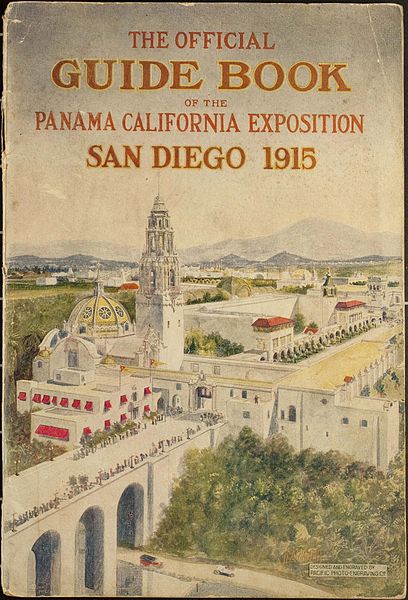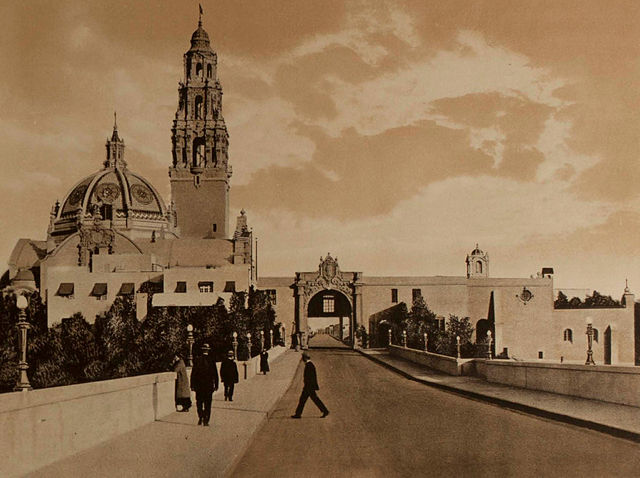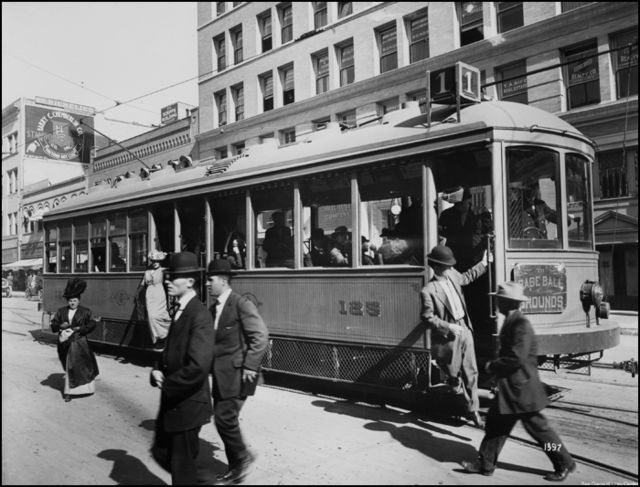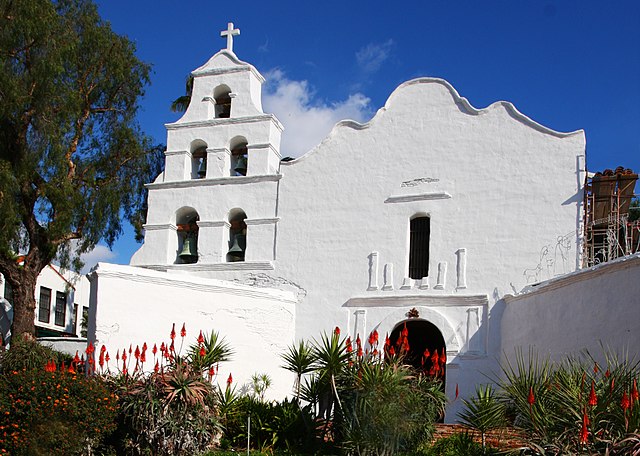Panama–California Exposition
The Panama–California Exposition was a world exposition held in San Diego, California, between January 1, 1915, and January 1, 1917. The exposition celebrated the opening of the Panama Canal, and was meant to tout San Diego as the first United States port of call for ships traveling north after passing westward through the canal. The fair was held in San Diego's large urban Balboa Park. The park held a second Panama-California exposition in 1935.
Official guide book
The Cabrillo Bridge looking towards the West Gate
Casa de Balboa, as rebuilt in the 1980s, and the El Prado Arcade
One of the San Diego Electric Railway streetcars at 5th and Broadway in San Diego, CA (1915)
San Diego is a city on the Pacific Ocean coast in Southern California located immediately adjacent to the Mexico–United States border. With a population of over 1.3 million residents, the city is the eighth-most populous in the United States and the second-most populous in the state of California after Los Angeles. The city is the seat of San Diego County, which has a population of nearly 3.3 million people as of 2021. San Diego is known for its mild year-round Mediterranean climate, extensive beaches and parks, its long association with the United States Navy, and its recent emergence as a healthcare and biotechnology development center.
Image: San Diego skyline 18 (cropped)
Image: La Jolla Shores view (cropped)
Image: Mission San Diego (cropped 2)
Image: Balboa Park 6 (cropped 3)








